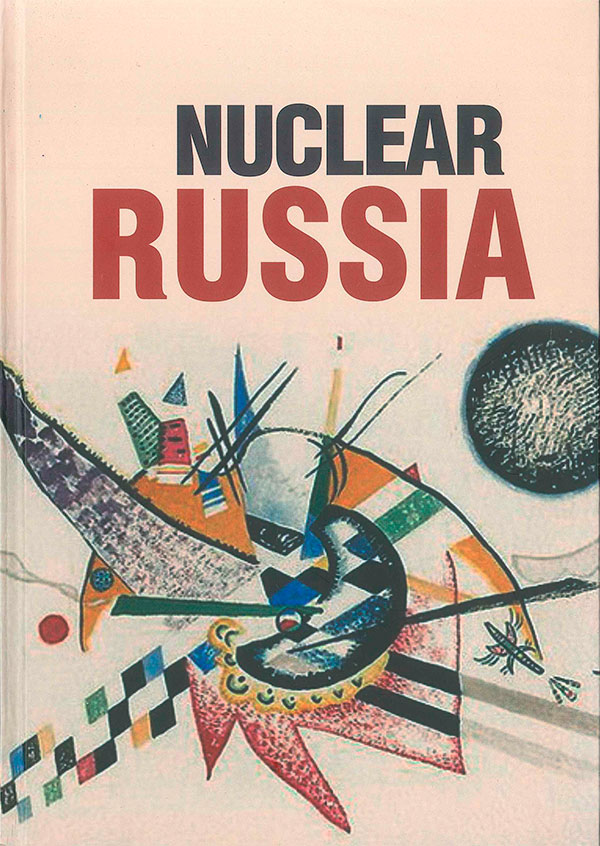Fighter Diplomacy
President Obama and Polish President
Komorowski Address U.S. and Polish Airmen
In
Login if you are already registered
(no votes) |
(0 votes) |
Research Fellow at the Primakov Institute of World Economy and International Relations under the Russian Academy of Sciences, RIAC expert
The North Atlantic Treaty Organization has stepped up its military activity on Russia's borders over the past six months. The redeployment of combat aircraft by the “old” members of the alliance in East European member-states and the almost continuous presence of NATO ships in the Black Sea are two of the most vivid examples of this mobilization.
The North Atlantic Treaty Organization has stepped up its military activity on Russia's borders over the past six months. The redeployment of combat aircraft by the “old” members of the alliance in East European member-states and the almost continuous presence of NATO ships in the Black Sea are two of the most vivid examples of this mobilization.
A Thaw in Europe
Since the dissolution of the Warsaw Treaty Organization and the collapse of the USSR, the “militarization” of Europe has steadily declined. In effect, the massive USAF European forces were reduced to only three permanent air bases with a relatively small number of combat aircraft [1], namely Spangdahlem (Germany, F-16C/D fighters), Aviano (Italy, F-16C/D fighters) and Lakenheath (England, 15C and F-15E fighters). The withdrawal of the last European attack aircraft A-10C «Thunderbolt II» in 2013 was quite symbolic, since this place was initially designed to deter an “avalanche of red tanks.”
Significant forces are stationed in Europe only during periods of armed conflict. Strategic bombers carrying out raids to the Middle East and the Balkans have traditionally operated from the UK. To accomplish these missions, a number of major airfields maintained flight refueling aircraft and military transport aircraft on a permanent basis and as well as retained USAF ground services to keep infrastructure in high standing. Following the collapse of the USSR, Russia stopped deploying combat aircraft in Eastern Europe. The region of Kaliningrad – the European outpost of Russia – has hosted a small number of Su-27 fighters, but their combat-readiness has been placed in question [2].

A B-2 Spirit from Whiteman Air Force Base, Mo.,
performed air refueling with a KC-135 Stratotanker
from Royal Air Force Mildenhall June 11, 2014,
over Cornwall, England
The main NATO aircraft deployments have mainly come in the form of exercises on the territory of new member-states and Air Policing missions.
The main NATO aircraft deployments have mainly come in the form of exercises on the territory of new member-states and Air Policing missions. The latter activities were initiated due to the fact that many new members of the Alliance possess no combat aircraft. The principle of collective security and practical defense needs require the deployment of aircraft capable of providing at least the basic defense of member-states, intercepting and escorting warplanes from other countries (primarily Russia), and, if necessary, forcing intruding aircraft to land. However, members of the Alliance, including the United States, are reluctant to deploy their military bases on a permanent basis in these countries. A compromise has been worked out, which provides for the rotation of small contingents to be stationed in countries for a short period of time.
Air Policing takes place in Albania, Slovenia, Iceland and the Baltic states. The missions in Slovenia and Albania are designed mostly for demonstration purposes and are carried out by the Italian Air Force together with the Air Force of Greece (in Albania). The mission in Iceland provides coverage of the northern part of the Atlantic Ocean – Russia’s Air Force reconnaissance planes and long-range bombers show up in that region quite regularly [3].
Baltic Air Policing is better known than the other missions. Russian aviation is very active in this region, and any activity of the Russian armed forces is traditionally an extremely touchy subject for the Baltic countries. The NATO mission there can hardly be regarded as a threat to Russia, since it comprises only a flight of fighter jets that are not equipped with strike weapons and that can only patrol the airspace and, at the utmost, intercept and escort the approached aircraft. Furthermore, NATO countries on duty in the Baltic States often deployed older aircraft, presumably in order to reduce the flight hour cost.
Apart from the Baltic States, the borders of Sweden have also become an objective of regular reconnaissance and training flights by the Russian Air Force. Although Sweden maintains a close allied relationship with NATO (e.g. Sweden took part in the NATO air campaign in Libya), it is not a member of the Alliance. Russian Air Force activity at its borders spurs on domestic supporters of joining the military block. In particular, the regular approaches [4] of 30-40 kilometers off Swedish territorial waters by small groups of heavy bombers carrying out mock attacks (on Stockholm as well), are causing an extremely negative reaction. After many such incidents were highlighted in the media [5] and overall relations aggravated by the Ukrainian crisis, it is not surprising that Sweden (and to a lesser extent Finland [6] ) is now closer than ever to joining the Alliance [7]. In November 2013, the Swedish government decided to contribute a squadron of Jas Gripen fighter jets to the NATO Rapid Reaction Force [8].
The situation on the western air borders of Russia up has generally been quite peaceful through the end of 2013. The USAF reduced its regular presence in Europe to historic lows. Moreover the Baltic Air Policing mission was confined to carrying out minimal duties of the military bloc necessary to ensure the collective security of its members and regular exercises, though occasionally causing a stir in the media, were rather a way to keep the sides on alert. However, the situation regarding Poland, a country that has often been the bone of contention in Europe, has clouded the general picture.
Bases in Poland and Belarus
Apart from the Baltic States, the borders of Sweden have also become an objective of regular reconnaissance and training flights by the Russian Air Force.
In 2010, Polish Defense Minister Bogdan Klich officially announced plans to host in-country rotations of F-16 jet fighters [9]. Following the Russian-Georgian conflict, Poland came to the conclusion that only the immediate deployment of the U.S. armed forces on its territory could provide sufficient protection from the inevitable, according to some Polish politicians, Russian aggression. The confidence of Poland in NATO institutions was significantly undermined [10]. Deployment was scheduled for 2013, but later these plans were radically changed.
Not surprisingly, the deployment of U.S. combat aircraft in Poland has caused ire in Russia. In particular, the Russians have emphasized that, unlike the components of missile defense or air defense systems, multi-function fighters are an offensive weapon [11]. The reaction to this deployment has been symmetrical. In April 2013, Minister of Defense Sergei Shoigu announced plans to deploy a Russian military airbase in Belarus. Although the initial plans were to follow the American pattern of rotating one or two units, very quickly serious adjustments were made in order deploy a Fighter Wing on a permanent basis [12].
Ghosts of the Cold War

RAF Typhoon multi-role fighter aircraft have
deployed to the former Soviet air base at Siauliai
in central Lithuania for a four month deployment
operating alongside the Polish Air Force to secure
NATO airspace in the Baltic region
The Ukrainian crisis has severely aggravated an already tense situation. In early March, the U.S. more than doubled the number of F-15C fighter jets on NATO air patrol missions in the Baltics from 4 to 10 fighters [13]. Frequent flights of Russian reconnaissance aircraft were given as the official reason. On February 24, 2014, or Estonian Independence Day, U.S. fighters took off to intercept a spy plane and during the same flight took part in a military parade in the city of Pärnu [14]. The American fighters were relieved by the first-ever multinational contingent of 12 fighters sent by three members of the Alliance (each country sent four fighters). Apart from Poland, the originally designated nation for this rotation of the Baltic Air Policing Mission, Britain and Denmark also provided aircraft. Moreover, while Poland and Denmark sent relatively outdated MiG-29 “Fulcrum” fighter aircraft and F-16 Fighting Falcon aircraft, Britain sent its first multi-function Eurofighter Typhoon. And that was not all. Although France did not officially participate in that round of the mission, it sent four Rafale combat jets to Poland to assist in conducting the Baltic Air Policing Mission, also a first for the country [15].
The Ukrainian crisis has severely aggravated an already tense situation. In early March, the U.S. more than doubled the number of F-15C fighter jets on NATO air patrol missions in the Baltics.
Such an impressive number of aircraft from several Alliance members has never before been deployed in such close proximity to Russia's borders. The airbase Malbork in Poland, which hosts Rafale combat jets, is just some 50 km away from the Kaliningrad region; the airbase Amari in Estonia where the Danish F-16s were deployed, is about 200 km away from the Pskov region. There have already several interactions with the Russian armed forces - the British Typhoons flew around a Baltic Fleet corvette [16]. In early June, NATO and Russia almost simultaneously carried out major exercises in the region [17].
In Poland and Belarus, the parties also acted almost simultaneously. On March 13, 2014, the first six F-16Cs from the Italian base in Aviano [18] landed at the Polish airbase in Lusk, while six Su-27s [19] did the same in Bobruisk (in addition to the four aircraft of the same type stationed in Baranovichi since December). Somewhat later, the United States increased the total in the group to 12 fighters. In Belarus, Russia temporarily based a AEW A-50 which could be a symmetric response to the Ukrainian border patrolling by a similar E-3 Sentry airborne surveillance plane of the Royal Air Force and NATO [20]. This worsening situation forced the Russian Air Force to speed up its plans to deploy a Fighter Wing on a permanent basis there. On March 17, 2014, Russian Air Force Commander V. Bondarev announced plans to deploy 24 Su-27 fighters before the end of the year [21].
Two Polish and two American F-16 fighters made for a very symbolic backdrop to President Obama's speech in Warsaw airport on June 3, 2014 [22]. In his remarks, President Obama called for strengthening cooperation in defending Polish skies, but also drew an unequivocal historical parallel. According to him, the Polish Air Force, fighting against the “Bolsheviks” in the Soviet-Polish war of 1919-1921, was founded by Americans of Polish origin, hence Americans in the first place [23]. One day after his speech the U.S. Air Force announced plans to temporarily deploy three B-52 Stratofortresses bombers at the Royal Air Force base in Fairford, England [24]. On June 8, two Spirit stealth bombers arrived in England for exercises [25].
The U.S. President asked Congress to allocate as much as $1 billion in additional spending to bolster the U.S. military presence in Eastern Europe [1]. It’s hard to say how this money will be spent and if it will be allocated at all, given the sequestration of the military budget. It looks like asking loud and clear for a princely sum of money is sufficient enough to appease allies and display a hard-line in countering Russia.
Military Expediency or Gesture Politics?
The movement of a hypothetical enemy close to the borders increases the vulnerability of the home base for modern fighters which have an operational radius of action about one thousand kilometers (without refueling). If the reason for a Russian military base in Belarus can be substantiated by the need for supporting the somewhat aging and rather outdated Air Force of an ally, such a reason does not exist with regards to Poland, since the Polish Air Force appears to be the most advanced in Eastern Europe. The Poles have at their disposal 48 F-16 fighter jets, which they are newer than those the USAF has [27].

United States and Finnish air force aircraft are
parked on the flightline at Bodo Main Air Station,
Norway, flightline May 7, 2014
The deployment of small groups of fighters in countries that lack their own Air Force to ensure peacetime defense, namely the prevention of air intrusions and escorting potential offenders, is undoubtedly a sensible and useful measure, but the increase in the number of such groups does not help a country meet ordinary defense needs. In terms of the strike potential against a technologically advanced enemy, these groups will make no difference if there is one or more aircraft unit consisting of different types of aircraft representing the Air Forces of various countries. This strike potential is virtually non-existent, and one unit is quite sufficient to perform the above tasks over a small territory.
The same is true for the B-52 and the B-2, since the redeployment of five aircraft does not change anything from a military point of view. Dozens of such aircraft stationed on the continent can reach anу part of the world if need be [28].
Therefore, the actions of NATO are of purely a political nature and are aimed at demonstrating a readiness to extend a helping hand to its allies. This has nothing to do with the times of the Cold War, when hundreds of aircraft of the two political blocs scattered round Europe were ready and able to turn the whole continent into nuclear ashes in a few hours. We are witnessing “a Cold War game,” which is essentially a theatrical movement.
In terms of the future, the United States will surely continue to maintain its rotation pattern in Poland, since establishing a permanent airbase there is unlikely for financial reasons. The intensification of Baltic Air Policing missions will lose its significance once the media component of the crisis recedes. There is every likelihood that NATO will react to the transition of the Crimea under the Russian jurisdiction (and probable quick re-equipment and strengthening of the Russian air group [29] ) by supporting Romania. The deployment there of six Royal Canadian Air Force CF-18 fighter aircraft at the end of April 2014 testifies to this readiness [30]. If the period of confrontation between NATO and Russia drags on, a Romania Air Police mission may be established.
How should Russia react to these developments? It should display self-restraint and forbearance. Since the actions of NATO pose no real threat and rather represent a PR campaign, it makes no sense to do something like “raids on Stockholm” that will only increase the legitimacy of taking such steps in the eyes of the general public in these countries. The United States is trying to consolidate NATO by using the image of Russia as an enemy, and there is no need to play into its hands. Russia, of course, has to ensure the safety of its Union State partner by deploying a Fighter Wing on its territory (once this choice is made, although there are alternatives, for example, equipping its Air Force with modern hardware on favorable terms and training personnel).
We can only hope that the crisis in relations between Russia and the United States-NATO will not deepen further and the true times of the Cold War will not replace the current gamesmanship.
1. http://www.usafe.af.mil/units/
2. http://klops.ru/news/obschestvo/66849-istrebiteli-su-27-perevedeny-iz-chkalovska-v-chernyahovsk-na-vremya-rekonstruktsii-aerodroma#1
3. http://www.reuters.com/article/2008/03/14/us-iceland-monitor-flights-idUSN1461960020080314
4. http://theaviationist.com/2013/04/22/backfire-sweden/
http://theaviationist.com/2013/11/13/russian-bombers-sweden-new-attack/
5. http://www.newsbalt.ru/detail/?ID=11483
6. http://russian.rt.com/inotv/2014-04-27/Yle-Finskie-oficeri-ne-doveryayut
http://fontanka.fi/articles/15018/
7. http://www.rosbalt.ru/main/2014/05/18/1269492.html
8. http://www.thelocal.se/20131128/sweden-offers-up-planes-and-ships-to-nato-reaction-force
9. http://www.f-16.net/f-16-news-article4253.html
10. http://inosmi.ru/poland/20101207/164749889.html
11. http://www.armstrade.org/includes/periodics/mainnews/2011/0511/10008132/detail.shtml
12. http://ria.ru/defense_safety/20131209/982998974.html
13. http://www.reuters.com/article/2014/03/05/us-ukraine-crisis-pentagon-idUSBREA242D320140305
14. http://theaviationist.com/2014/02/26/estonia-flyby-delayed/
15. http://www.janes.com/article/37253/nato-s-tripled-baltic-air-policing-mission-begins
16. http://www.telegraph.co.uk/news/10839095/RAF-Typhoons-sent-to-intercept-Russian-helicopter-over-Baltic.html
17. http://www.rg.ru/2014/06/10/uchenia-site.html
18. http://itar-tass.com/mezhdunarodnaya-panorama/1044167
19. http://korrespondent.net/world/3319022-rossyia-napravyla-v-belarus-ystrebytely-su-27-y-voenno-transportnye-samolety
20. http://www.airforcetimes.com/article/20140310/NEWS/303100021/NATO-AWACS-aircraft-fly-over-Poland-Romania
21. http://naviny.by/rubrics/politic/2014/03/17/ic_news_112_433531/
22. http://www.whitehouse.gov/the-press-office/2014/06/03/remarks-president-obama-and-president-komorowski-us-and-polish-armed-for
23. “… I would like to remind you that we have already had an opportunity to host American pilots in the Polish skies. It was at a very important moment in Poland -- it was back in 1920 when the first Polish squadron was fighting against the Bolshevik wave, and it was established on the basis of the American pilots, mainly those of Polish origin from Chicago and other American towns. But these were American pilots.”
24. http://www.defensenews.com/article/20140604/DEFREG02/306040024/US-Deploying-B-52s-Europe
25. http://intercepts.defensenews.com/2014/06/video-b-2-stealth-bombers-arrive-in-england-for-exercises/
26. http://www.washingtonpost.com/politics/us-announces-1-billion-program-to-boost-military-presence-in-eastern-europe/2014/06/03/414c0240-eb00-11e3-9f5c-9075d5508f0a_story.html
27. http://www.f-16.net/f-16_users_article15.html
28. http://www.airwar.ru/history/locwar/persg/b52/b52.html
29. http://defendingrussia.ru/army/aviagruppa_dlya_avianostsa_krym
30. http://www.theglobeandmail.com/news/world/caandian-cf-18-jets-deploy-to-romania/article18334275/
(no votes) |
(0 votes) |






